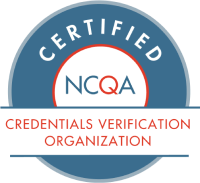The facts and figures behind the growth of Medicare Advantage (MA) are clear – Medicare Advantage patients pay 40% less out-of-pocket on healthcare compared to patients in traditional fee-for-service Medicare plans. Combine that with ancillary benefits like hearing aids, vision care, and dental care, it’s no surprise that patients find MA plans appealing. And that appeal is resulting in substantial growth. Medicare Advantage enrollment has doubled in the past decade, with 26 million patients enrolled in Medicare Advantage out of 63 million total Medicare enrollees.
Despite the growth, there’s still plenty of room for expansion of Medicare Advantage networks at both the state and county level. Several states still have enrollment rates below 20%. Even in states with over 50% of Medicare patients in MA plans (like Florida), there are counties with enrollment rates in the teens. For health plans, traditional and new players alike, building more and expanding existing MA networks makes good financial sense.
Then why do so many organizations still take ad hoc or reactive approaches to MA builds?
They shouldn’t. A comprehensive, strategic approach to MA network development makes far more sense. For that matter, it makes sense no matter what type of healthcare provider network you’re talking about—something we’ll talk about in a future article. Too many organizations make critical decisions about their MA builds late in the cycle, and as a result they waste effort (and money!) trying to build networks that aren’t viable because they’re missing a critical piece– perhaps a provider group or facility they’ll need to achieve adequacy.
What makes a successful, holistic approach to Medicare Advantage? There are three key components:
- Data-based, strategic market assessment
- Contracting and recruiting solution
- Credentialing
Let’s dig a little deeper into each of these components.
Assess markets before investing in them. A thorough market analysis addresses more than just the opportunity a given county presents. Organizations must identify opportunities where there are enough potential patients, but without an accurate assessment of the likelihood of building an adequate network, they’re just an invitation to waste time and money. In many counties that otherwise look appealing, adequacy can’t be achieved without a specific provider group or organization.
Assessments must go beyond the potential market, and even the provider and facility landscape, to identify a path to adequacy and then evaluate the likelihood of success. Only then can strategic decision makers consider both the opportunity and the risk properly and make a sound decision. Accurate provider data (like the 7.2 million provider profiles in the a* Platform) allows you to move beyond a scattershot approach and quickly target essential providers, allowing you to make go/no-go decisions before investing too much time and money.
Follow best practices in recruiting and contracting. With a prioritized list of providers to target in building an MA network, organizations can take a smarter approach to recruiting and contracting. Focus first on high-priority providers, so you’re quickly able to determine if adequacy is in reach. Once you reach that threshold, you can go to market with your network. You can then continue to push for superior marketability by recruiting more providers for increased patient choice.
Simultaneously, be intentional in determining how to reach out to providers for your MA network. Can you leverage lower-cost approaches for some, or devise an escalation scheme so you’re recruiting as many providers at a low cost as possible before investing in more expensive, personalized outreach by recruiters? Make sure you have a dedicated system managing recruiting and contracting workflows, consistently updating priorities to reflect network needs, so person-hours are directed where they are most needed.
Consider recruiting, contracting, and credentialing as complementary, ongoing processes, not separate, consecutive ones. Both tasks revolve around provider data. Organizations recruit (and ultimately contract) providers based on data that identifies them as valuable to a network; credentialing verifies provider data against primary sources. Why consider them separate tasks and wait to credential providers after you’ve contracted all of them? Why not get a jump on credentialing by moving contracted providers directly into a credentialing workflow? The argument that you don’t want to invest in credentialing before you need it isn’t compelling, especially if you have the insight to understand where you are on the path to adequacy (or marketability).
Of course, in-house credentialing itself isn’t the most effective use of resources. In-house teams, without access to the type of data available in a dedicated provider data resource like the a* Platform, have to reach out to multiple state, federal, and private institutions to verify data. The costs of this time compound if they’re taking place on a tight timeline, as well. Getting a head start and building credentialing into the MA build process saves time and money.
andros is uniquely able to offer healthcare organizations a holistic, lifecycle approach to Medicare Advantage network management. As the sole organization with a technology suite capable of both network development and NCQA-certified credentialing, we understand the critical importance of both these steps to the long-term success of any Medicare Advantage network.



